Entry 4 Day 25 6 November 2024 35°3'3.6''S, 55°57'0''W Travelled: 6776.71 Nautical miles
35°3'3.6''S, 55°57'0''W Travelled: 6776.71 Nautical miles
Food, glorious food

On board the ship, food is very important! When you’re at sea for many weeks, meals help structure the day and mark the passage of time.
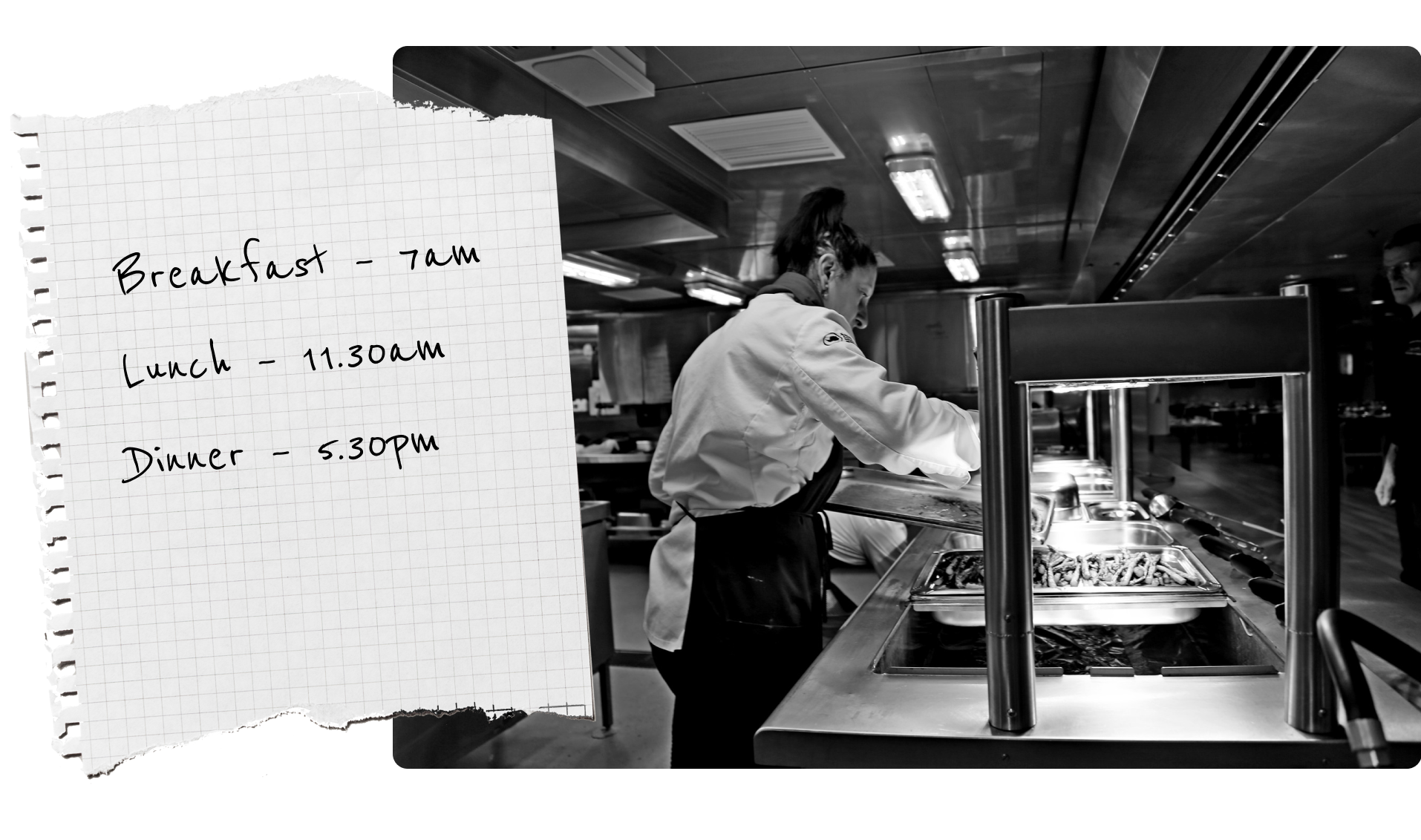
Meals on the ship are slightly earlier than you might be used to! The day starts bright and early, with breakfast at around 7am. There’s lots on offer including porridge, cereal, fruit and some hot options too.
Lunch starts at 11.30am – it sounds early, but you get used to it pretty quicky. Plus, being out on deck in the cold is hungry work!
Dinner is at 5.30pm. The chefs on board do a great job of cooking nutritious meals that keep everyone healthy while they’re at sea. They also cater for different dietary requirements – there’s always at least one plant-based option available. Everyone on board serves themselves – a bit like a buffet.
It’s never too cold for an ice cream
Ever wondered what you eat in a day on a polar ship?
Watch the video – opens in new tab
Did you know?
A kitchen on a ship is called a galley, and the dining room is called the mess.
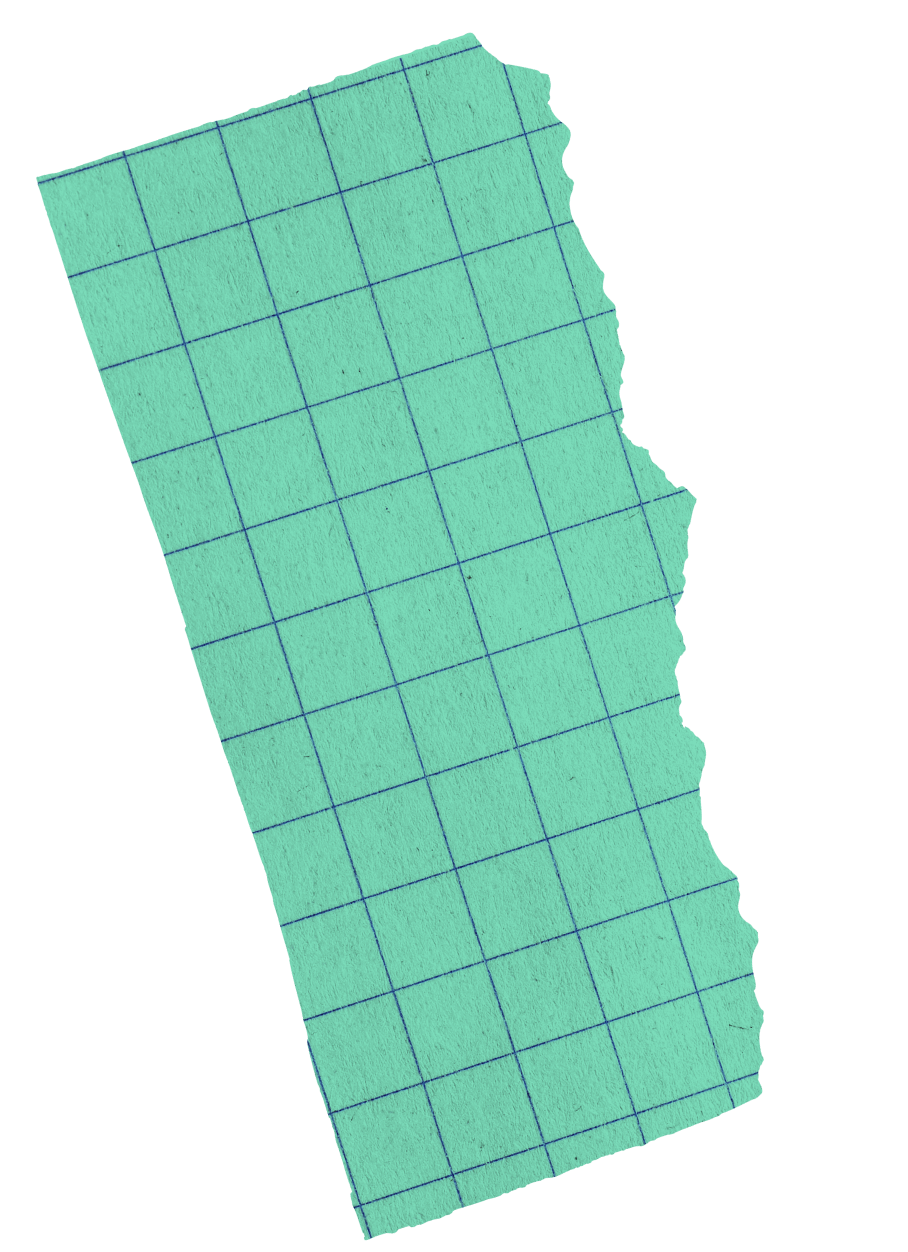
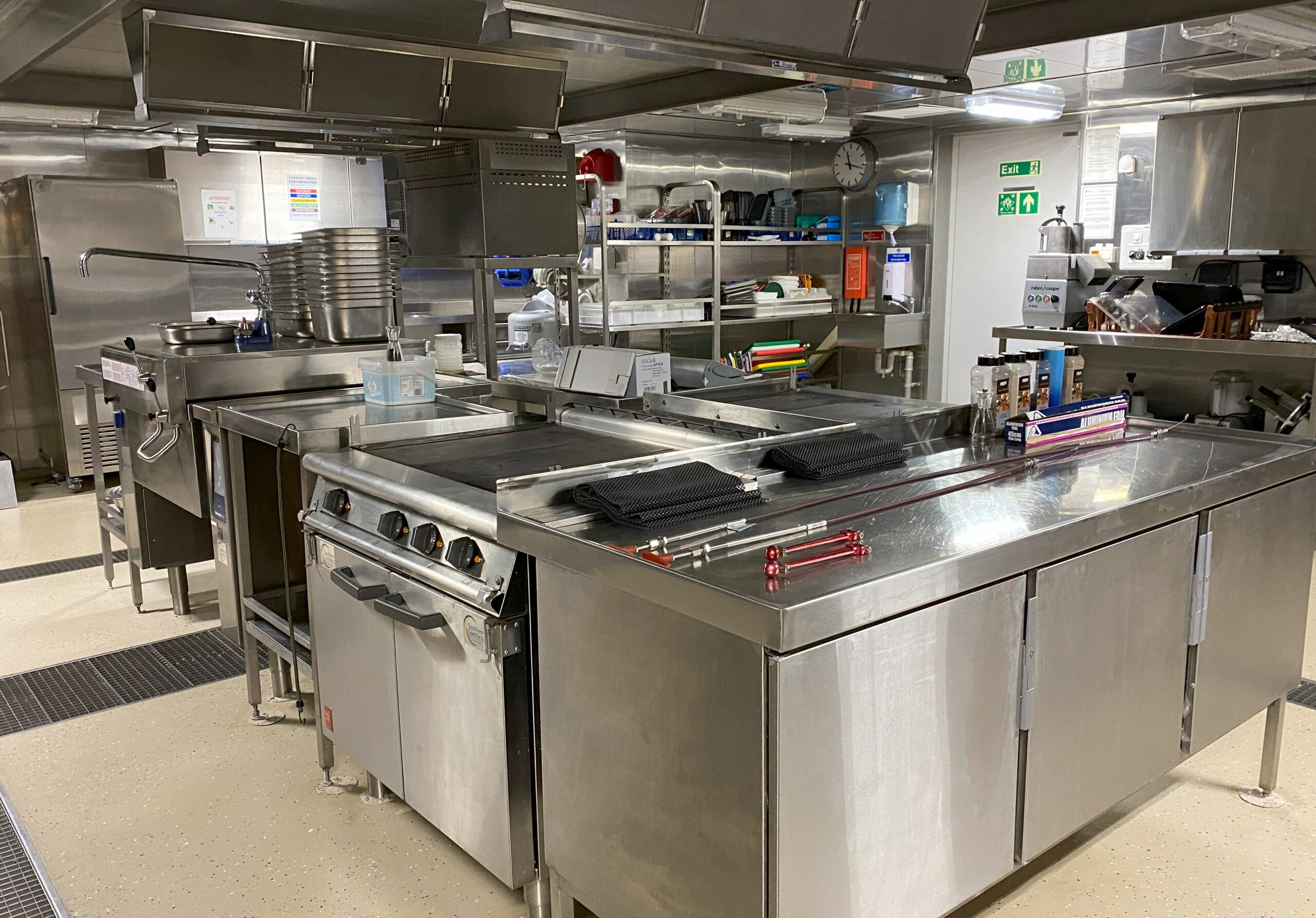
Did someone say ‘smoko’?
‘Smoko ‘is a very important part of life in Antarctica – and on the ship. This is a tea break at around 10am and 3pm – usually accompanied by a slice of cake or a biscuit! It’s a time when the crew get together for a chat and to do the crossword.
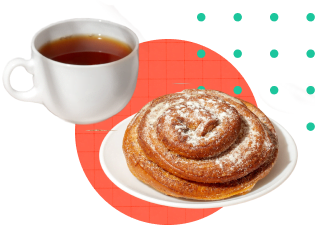
Why is it called ‘smoko’?
The name ‘smoko’ is thought to have originated in the British Merchant Navy, when they would have their cigarette break.
Cooking at sea
Cooking at sea can be tricky in rough weather. So how do the chefs still prepare food for everyone?
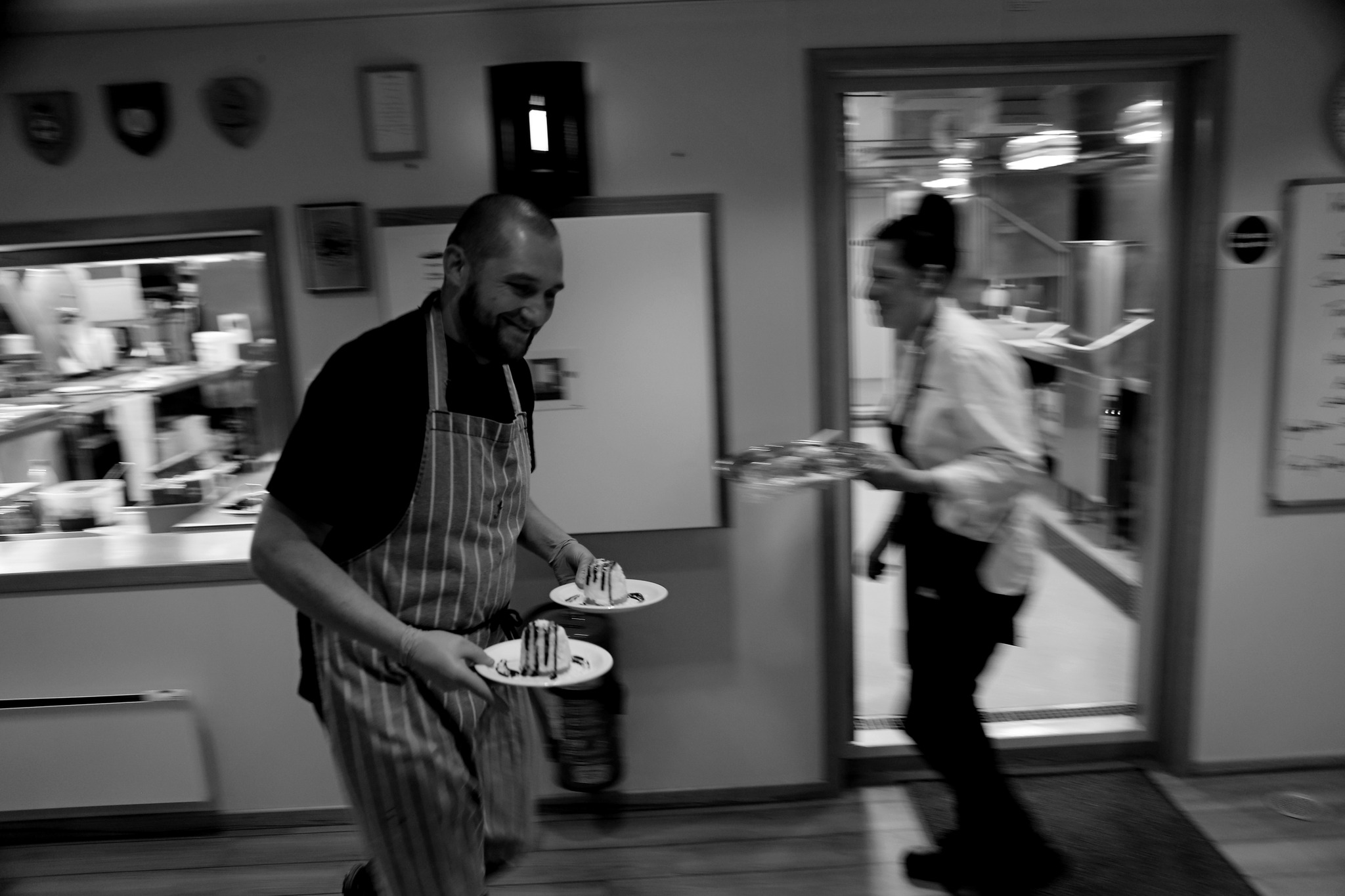 Rich Turner
Rich Turner 
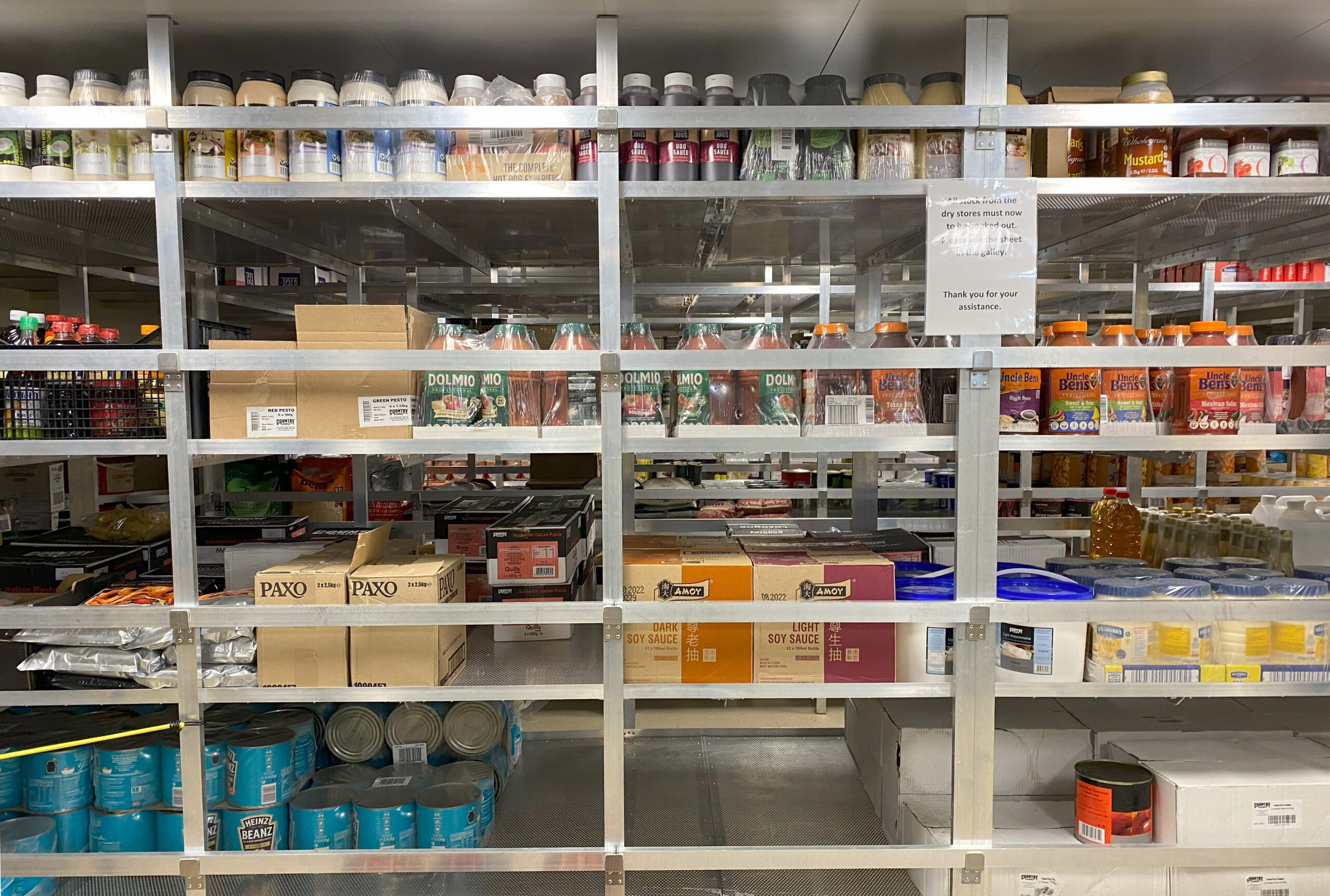
When weather is rough, the chefs make the soup much thicker to stop it sloshing around as much, and they cook simple dishes – because everything is twice as hard when the ship is rocking and rolling!
The stoves are fitted with storm guards – special bars that stop the pots falling off – and everything gets tied (or lashed) down.
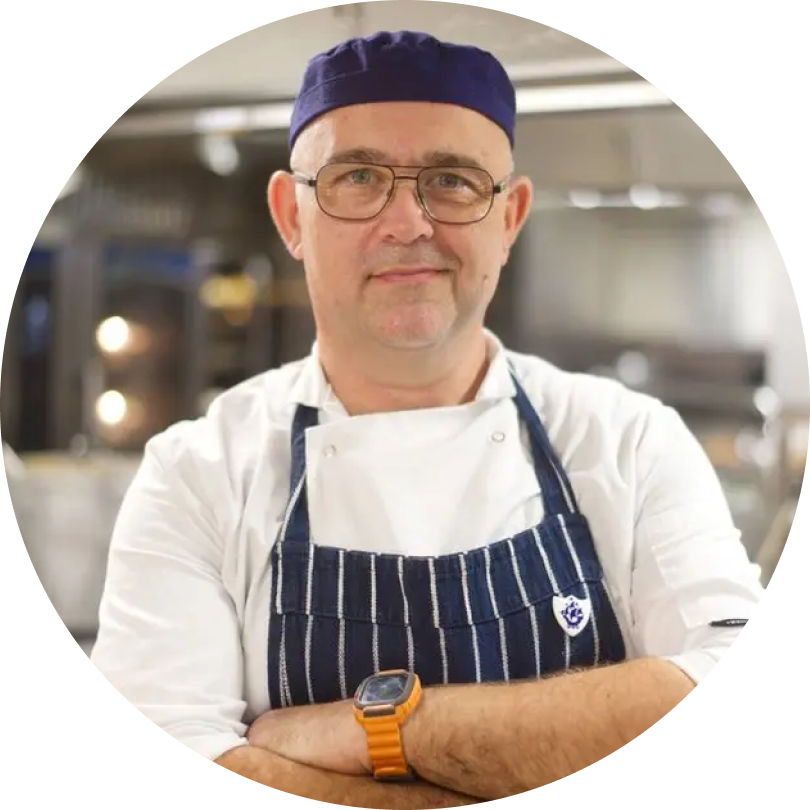
Cooking in rough weather is challenging. But the weather has never been so bad that we’ve been unable to serve a meal – even when crossing the notorious Drake’s Passage!
Steve Carpenter, chief cook
Keeping food fresh
Aside from rough weather, one of the biggest challenges facing the chefs is how to make interesting and nutritious food, without a constant supply of fresh ingredients.
The ship has lots of special features to store food and to make the fresh ingredients they get in port last as long as possible.
Eggs
The chefs regularly turn the trays of eggs over. This keeps the inside of the shell moist and stops air getting into the egg – stopping them from going bad! If the eggs are kept refrigerated, they can be kept fresh for up to five months using this method.
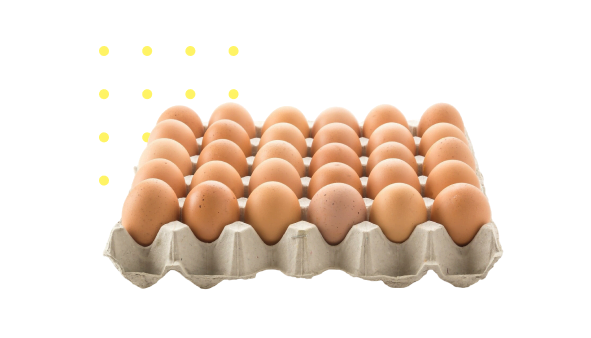
Fruit and vegetables
The fresh fruit and vegetables are kept in a special storeroom, between 2 and 5°C. Around the room are special tubes that absorb something called ethylene – a chemical released by some fruit and vegetables as they get riper. By absorbing it from the air, it slows down the ripening process, keeping things fresher for longer.
However, when they’re at sea for weeks at a time, the chefs rely on tinned and frozen fruit and veg to keep them going .
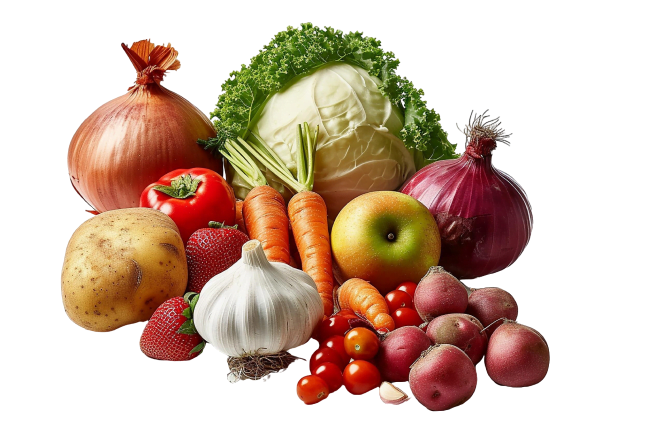
Potatoes
Did you know, the RRS Sir David Attenborough has a special potato room on board? The potatoes have to be stored at a slightly warmer temperature than the fruit and veg to prevent the starch turning into sugar and making the potatoes go bad!
The chefs take a whopping 1.5 tons of potatoes on the ship with them for roasting and to make chips. They take even more potatoes for jacket potatoes, as well as sweet and new potatoes!

Sustainability at sea
With limited resources, it’s important not to waste food at sea.
Watch the video – opens in new tab
Meet a Steward
Doreen Thomson is a Steward on board RRS Sir David Attenborough. She is part of the Galley team, along with the chefs, Purser and other stewards.
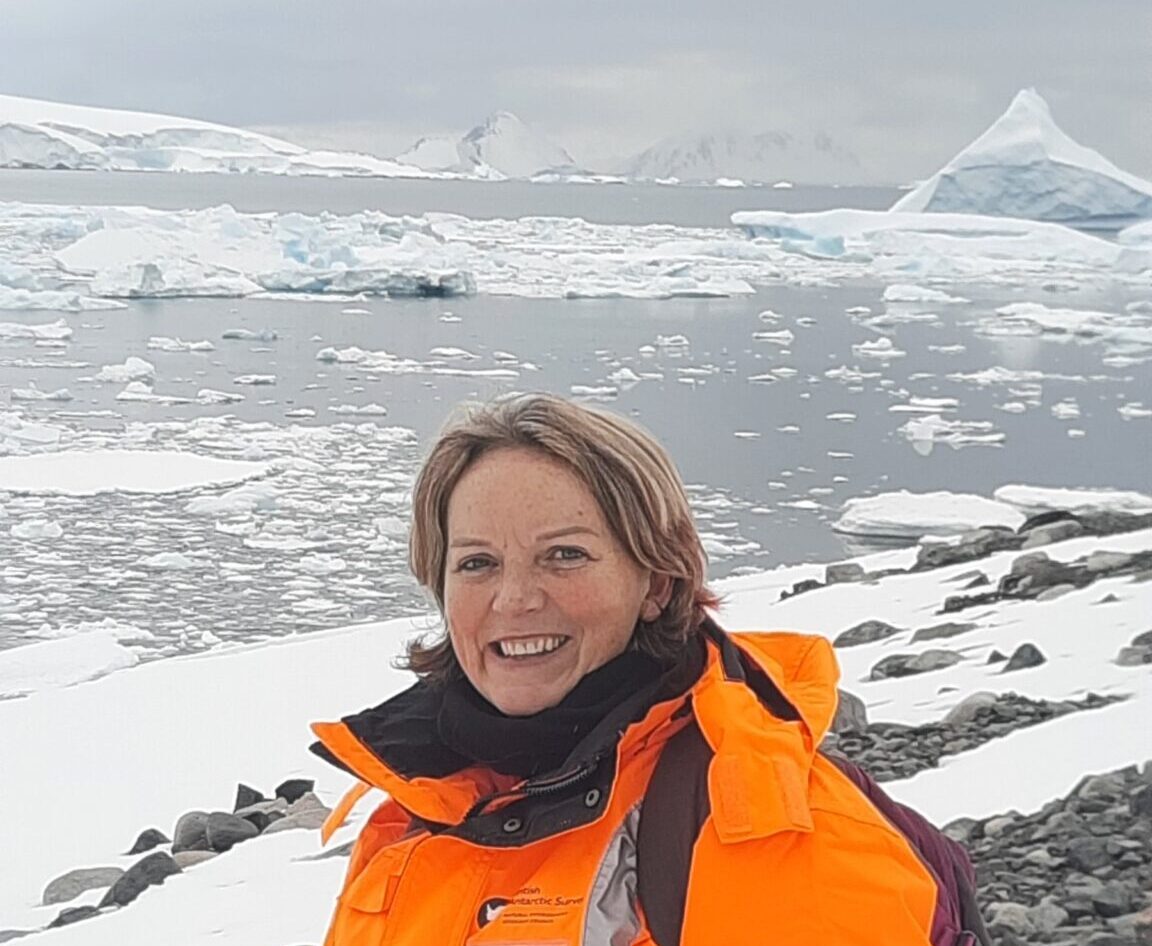
Doreen in Antarctica
What does being a steward involve?
A steward’s job is to keep the public areas tidy – the stairs, the decks – and cleaning the officers’ cabins. I help serve meals in the mess and to look after the rest of the crew.
What does a typical day look like?
I wake up and start work at 5.30am. First I clean staircases, wash the decks on Decks 6 and 7 and then I have breakfast. Next, I clean some cabins and shared spaces, and then help with breakfast, lunch and dinner.
How did you end up doing this job?
I love to travel. I’d worked on cruise ships for 17 years and wanted to go to Antarctica. When this job I came up I applied and went to Antarctica last year. It was so fantastic – and so I’m still here!
What’s the best thing about your job?
Seeing Antarctica and all the icebergs and the animals like penguins – I love penguins – and whales. Just being able to see Antarctica really.
What was it like seeing Antarctica for the first time?
I’ve been to lots of places, like Alaska and the Norwegian fjords, but Antarctica is the most amazing place on Earth. It’s the wow factor every time.

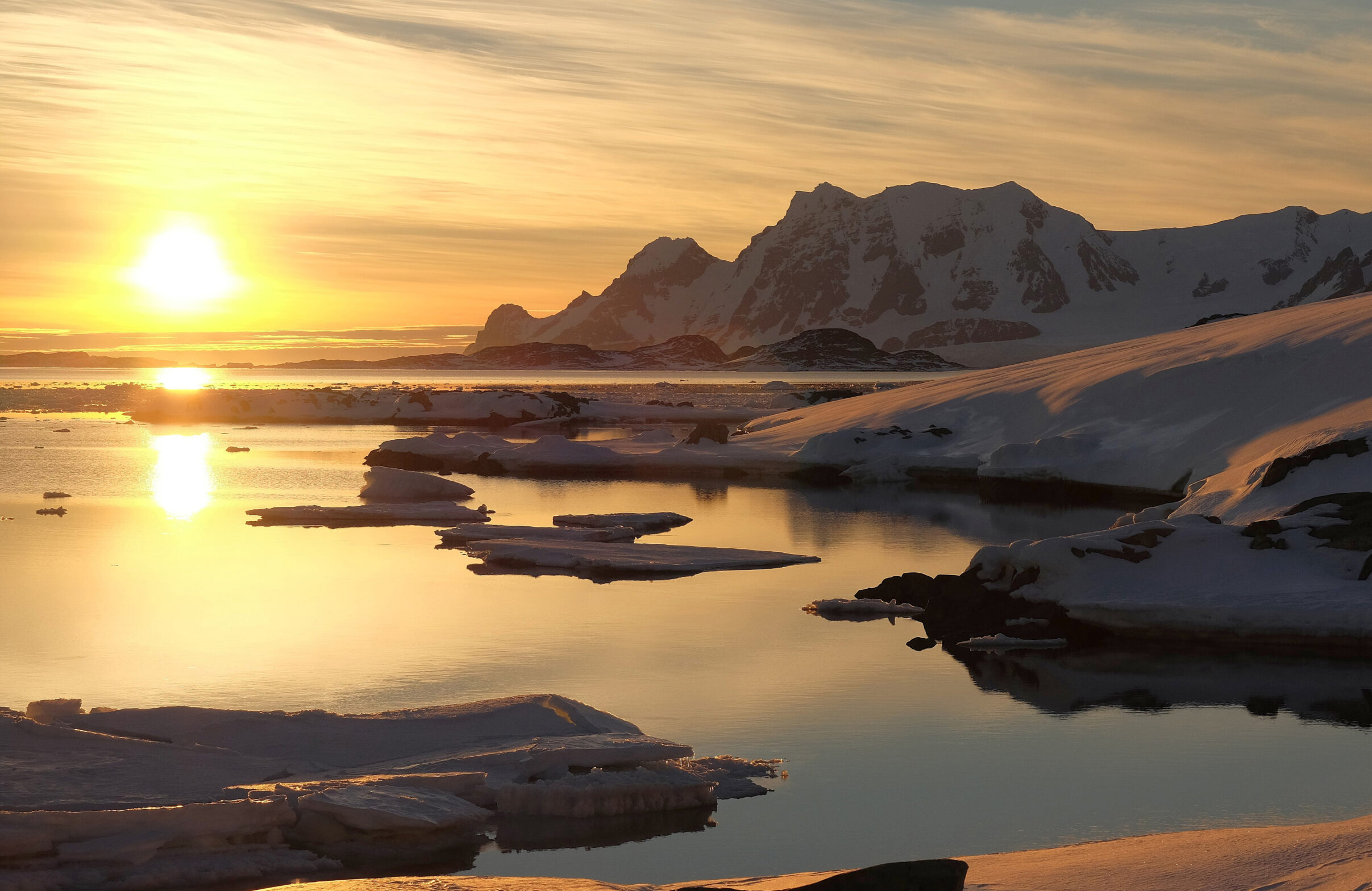 Steve Gibbs
Steve Gibbs How does this ship compare to others you have worked on?
I’m used to working on a passenger vessel. On here, we have scientists instead! The crew are happy to be here and want to see Antarctica. It’s important working in a happy environment – that’s really good here.
What is challenging about your job?
I don’t like waking up at 5.30am in the morning but when you’re in Antarctica and you look out the window and see a penguin sitting on an iceberg you go out with your camera and it makes it worthwhile!
Bake bread with Steve
Chief cook Steve uses 5kg of flour *every day* to make enough bread for the crew of the RRS Sir David Attenborough. With 90 people to feed while the ship travels through the Southern Ocean near Antarctica, this is just a quick task in a packed day of cooking! Here’s Steve’s daily, no-nonsense bread routine – you’re welcome, Paul Hollywood.
Baking bread on RRS Sir David Attenborough
Cook like a ship’s chef!
We asked Chef Steve to share his recipe for lentil bolognese. This is a healthy, nutritious meal – using ingredients they can keep fresh on the ship!

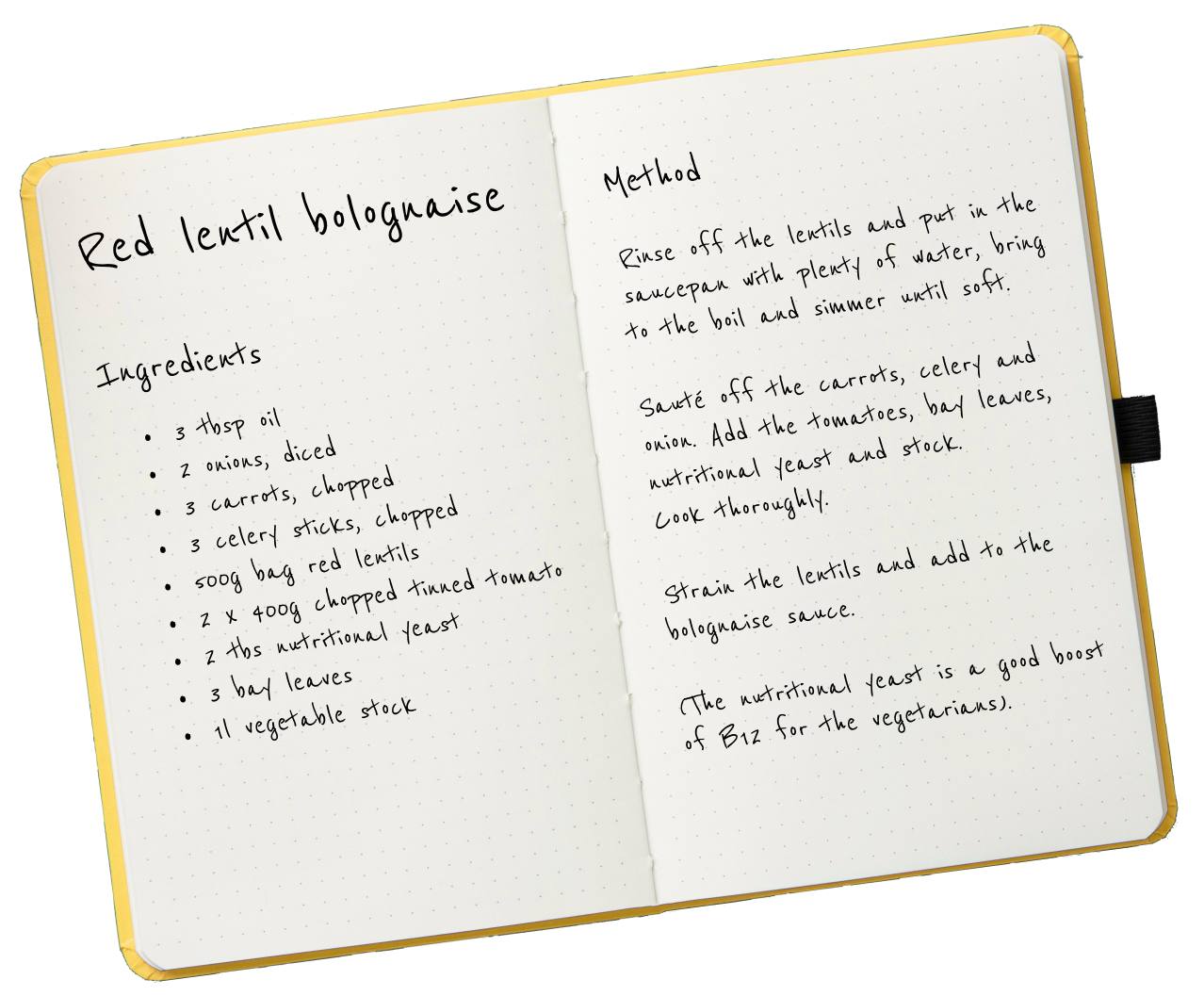

Chefs of Antarctica
Want to learn more about cooking in Antarctica? Check out this podcast where host Nadia Frontier chats to two of the chefs at Rothera Research Station about what it’s like cooking in one of the most remote places in the world.
